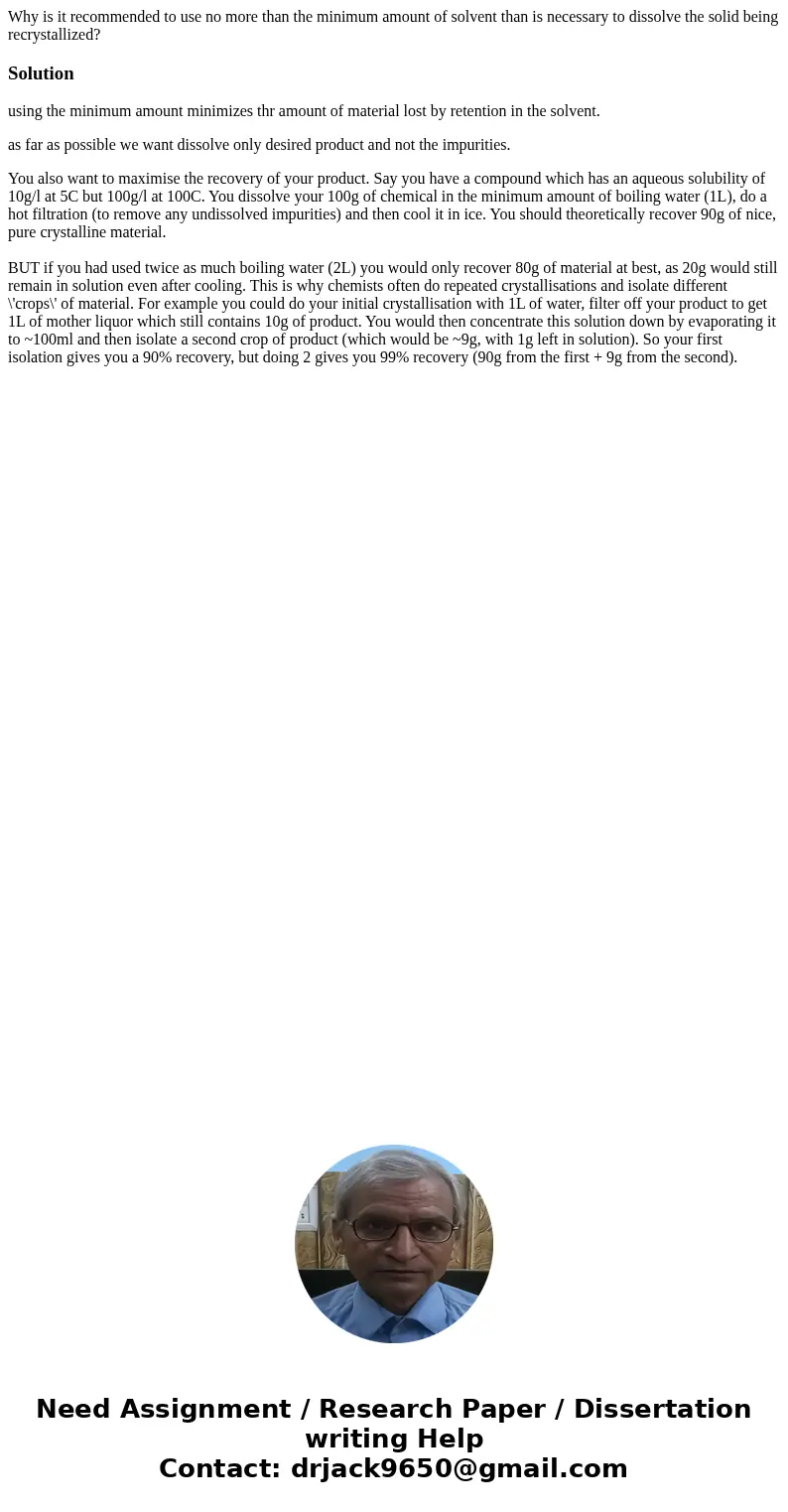Why is it recommended to use no more than the minimum amount
Why is it recommended to use no more than the minimum amount of solvent than is necessary to dissolve the solid being recrystallized?
Solution
using the minimum amount minimizes thr amount of material lost by retention in the solvent.
as far as possible we want dissolve only desired product and not the impurities.
You also want to maximise the recovery of your product. Say you have a compound which has an aqueous solubility of 10g/l at 5C but 100g/l at 100C. You dissolve your 100g of chemical in the minimum amount of boiling water (1L), do a hot filtration (to remove any undissolved impurities) and then cool it in ice. You should theoretically recover 90g of nice, pure crystalline material.
BUT if you had used twice as much boiling water (2L) you would only recover 80g of material at best, as 20g would still remain in solution even after cooling. This is why chemists often do repeated crystallisations and isolate different \'crops\' of material. For example you could do your initial crystallisation with 1L of water, filter off your product to get 1L of mother liquor which still contains 10g of product. You would then concentrate this solution down by evaporating it to ~100ml and then isolate a second crop of product (which would be ~9g, with 1g left in solution). So your first isolation gives you a 90% recovery, but doing 2 gives you 99% recovery (90g from the first + 9g from the second).

 Homework Sourse
Homework Sourse